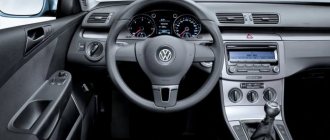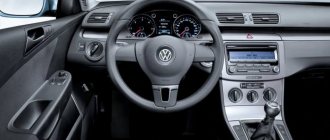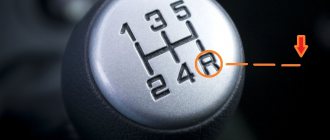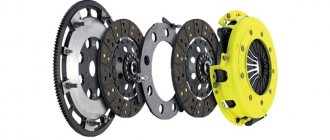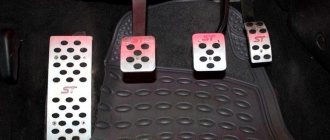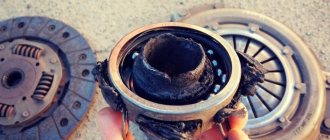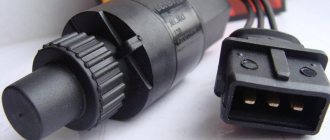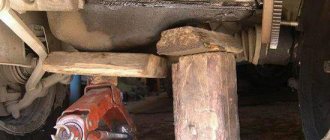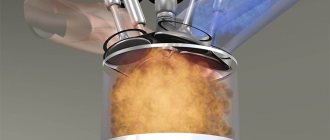You don’t need to be an experienced motorist to understand that the clutch in a car is not installed as an additional option. You can quickly ruin the perfect condition of the gearbox if you change gears without using the clutch correctly. They talk about this even in driving school. Do I need to learn the skill of shifting gears without a clutch? Definitely yes. Because, although small, there is still a chance that the clutch will break.
In many cases, simple instructions will help in such circumstances. When the engine is turned off, you need to switch to first gear, starting to move off at the starter. You wait until the first jitters pass. Shift into second gear. This is not difficult to do - you need to sharply and firmly press the gas pedal, and then release it with lightning speed. Right now you need to switch to second speed. And we continue according to this scheme.
You should not try to drive with clutch problems. It is better to stick to a speed of 40-50 kilometers per hour.
Is it possible to change gears without a clutch?
Let us immediately clarify that such instructions may not work with all vehicles with a manual transmission.
You should look for information on this matter for your car yourself if you are really interested in the issue. What about stopping? They are undesirable for obvious reasons. This is not a reason to skip all traffic lights and create emergency situations. You can just go in circles, find some free workarounds. What we can say for sure is that this will require a certain level of professionalism. If a stop is necessary, you will have to start the whole scheme from the very beginning. But it’s better than an accident due to an unwillingness to stop.
Adviсe
- Pay attention to the engine speed, and at what speeds, what gears can be engaged. This will help you develop the skill of driving without a clutch.
The principle of gear shifting on mechanics
The operating principle of a manual transmission is based on connections between the input and output shafts through combinations of gears with different numbers of teeth. In other words, the engine operates by changing the number of revolutions, regulating the force on the drive wheels. This allows you to achieve optimal engine operation when starting to move, accelerating and decelerating. The principle of operation does not depend on the drive, but each model will have its own characteristics.
The mechanical box is designed for smooth and uniform distribution of the torque element. The manual transmission includes several gears, which are controlled using a lever. The connecting element between the gearbox and the engine is the clutch. The constantly rotating crankshaft is meshed with the transmission input shaft. And the clutch allows you to separate and connect these elements, due to which movement occurs.
To get a consultation
What happens if you change gear without a clutch?
Naturally, there is no need to practice this all the time without doing anything. And you are unlikely to be able to do this intentionally and easily. A difficult task. Because the driver will encounter such serious vibration on the lever that it will immediately become clear that it’s time to end such experiments.
Still, let's not forget that gears and rims are products made of alloy steel. A person does not have much strength to “defeat” them. There is definitely a small chance that the teeth will be able to match, resulting in a gear change. But the chances of this are very small. The most important thing here is the moment of engagement of the lever with the gear. But he doesn’t exist, as you understand.
Warnings
- Please note that not all transmissions allow smooth shifting without a clutch; frequent unsuccessful shifts can cause transmission failure. Transmissions designed for heavy loads may wear out more and the gears will be more difficult to engage without a clutch. Clutchless gears work best in small cars with a conventional transmission.
- When downshifting, make sure the engine speed begins to drop before attempting to shift into gear. If you apply force prematurely, the gear teeth may be damaged.
- Shifting without a clutch is only possible when the vehicle is moving. Pulling off a car requires using the clutch.
The clutch has failed - how to get there correctly
Of course, the best option is to call a tow truck, but what to do if trouble finds you in some villages, where you will have to wait a very long time for a tow truck, and its services will cost an order of magnitude more. Of course there is a way out! Let's try to get there without the clutch.
How to start without a clutch
For a successful start, you need to press the accelerator pedal a little so that the engine does not just jerk and stall, as happens with novice drivers, but goes in first gear.
The main thing is that before starting the battery, the load on the battery is minimal, because pulling the entire car while simultaneously starting the internal combustion engine is a very difficult task even for the newest battery.
We turn off the daytime running lights, radio and other consumers of electricity. Then you need to engage the first gear and start the starter for a few seconds. In a successful scenario, the car will twitch briskly, and lightly pressing the gas pedal will not allow the engine to stall.
Then you get the opportunity to drive in first gear to your home or service station, even if your clutch fails somewhere along the road.
To prevent other road users from being too indignant at your low speed, simply turn on the hazard lights and continue driving in the far right lane so that other motorists can overtake you without any problems.
Stopping must be accomplished by moving the gearshift lever to the neutral position. Then all that remains is to brake smoothly using the standard foot brake pedal.
Clutch problems
When operating a car, a significant load is placed on the clutch, so it is not uncommon for such a unit to fail, and most often this happens on the road, after which you either need to somehow get to a service center, or call a tow truck and pay money for such services. Most often, on cars with a clutch, the cable that goes to the fork directly from the pedal breaks. There may also be wear and failure of the release bearing, which allows the discs to move apart in the clutch.
If such malfunctions are present, it will be impossible to properly depress the clutch and change gear. Most car owners, finding themselves in such an unpleasant situation, call a tow truck, and today this means several thousand extra rubles that could be saved by learning to change gears without a clutch. In this case, an appropriate correct algorithm of action will be required, which eliminates the increased load on the box, and the car owner will be able to get to a service center or go to a garage, where the car will subsequently be repaired.
Driving without a clutch: subtleties and nuances
So, as for the clutch, many drivers know that this unit is subject to significant loads during operation and may require replacement every 80-100 thousand km.
In this case, malfunctions in the clutch operation manifest themselves in such a way that the driver cannot engage the desired gear after starting the engine, gears are engaged with great difficulty, and engagements are accompanied by a crunching or grinding noise.
There are also situations when, for example, the clutch cable breaks, problems arise with the pedal assembly, etc. Driving without a clutch is also practiced in motorsports and in extreme conditions, when the driver seeks to minimize the disruption of power flow when squeezing the clutch to change gears.
In any case, if it is necessary to continue driving under your own power due to a malfunction or for another reason, on a car with a manual transmission it is possible to shift without using the clutch. This becomes possible provided that the engine and transmission speeds are synchronized.
- Now let's look at a typical case when the clutch does not work, but you need to drive. First of all, you need to start moving. To do this, with the engine turned off, first gear is engaged. Next, before you start driving without a clutch, you need to make sure that there are no obstacles in the way.
Now you can turn the key in the ignition and start the engine with first gear engaged. It is important to be prepared for the fact that immediately after turning the key the car will begin to actively move forward (for the first 1-2 seconds there will be a jerk from the starter, then the engine will start). For this reason, the gas pedal should not be pressed before starting the internal combustion engine.
After the car starts moving and the engine starts, you need to continue driving in first gear, gradually adding gas. If this is enough, then on the 1st it is quite possible to get to the repair site or parking lot.
- If you need to continue driving without a clutch with an upshift, that is, when you need to shift higher (from first speed to second, third, etc.), then you need to shift gears “up” while moving, taking into account certain rules.
If you need to increase the gear, you should remove your foot from the accelerator pedal (this will relieve the load on the transmission). Then you need to make sure that the speed is approximately the same as the gear you want to engage. To engage a gear, you will need to move the lever to the position where one or another gear is engaged. You also need to hold the gear shift lever with a little force.
The force may also differ on different cars. At the moment when the engine speed matches the transmission speed, the gear is engaged. After turning on, you can press the gas again and continue driving.
Please note that if you apply too much force, then the gear may be engaged earlier, which can cause gearbox failure, wear of synchronizers, gears, etc.
In this case, minimal effort can also cause the gear not to engage. Moreover, attempts to turn on the speed with minimal effort lead to the fact that the gear teeth also wear out.
Taking into account the above, it becomes clear whether it is harmful to change gears without a clutch. As you can see, gearbox wear can increase, especially if the driver makes mistakes when shifting.
- To downshift (downshift) without a clutch, downshifting is done in a slightly different way than upshifting. To put it simply, the gears are engaged with over-throttle.
To begin with, you need to take your foot off the accelerator pedal, then you can turn off the gear by moving the gearbox to neutral. Next, you should press the gas pedal again, raising the speed to 2-2.5 thousand rpm.
After this, when the speed drops, you need to push the gearshift lever with a little force to the position where the desired gear is located. At the moment when the engine speed is equalized in relation to the transmission speed, the desired gear will be engaged.
- Also, in some cases, it becomes necessary to engage reverse gear without a clutch. Let us note right away that without proper experience and urgent need, it is better to refuse attempts to engage reverse gear in case of clutch problems.
However, if such a need exists, then reverse gear can be engaged in exactly the same way as first gear at the beginning of the movement. First, the car should be stopped (if the car was moving forward before), the internal combustion engine will need to be turned off. Then reverse gear is engaged with the engine turned off.
After the gear is engaged, you need to crank the engine with the starter and be prepared for the car to sharply jerk back. Next, the engine should start, after which the vehicle will be able to continue moving in reverse on its own.
Engaging top gear
To engage top gear, you will need to do several sequential steps:
1. take your foot off the gas pedal;
2. turn off the gear by moving the box to “neutral”;
3. move the knob to the direction of the gear you want to engage;
4. lightly press the handle (the force can only be determined experimentally, since it is different for different cars);
5. after synchronizing the engine and gearbox speeds, the gear will engage;
6. To further increase speed, smoothly depress the gas pedal.
If you press the lever too hard, the shift will occur prematurely. With weak force, the gear simply will not engage. In both cases, this will lead to abrasion and even destruction of the gear teeth in the box.
Downshifting
A lower gear is engaged when the engine power is not enough to maintain normal movement. This happens when driving up a steep mountain, with the car fully loaded, on a difficult road surface. To shift without pressing the clutch, you will need:
1. take your foot off the gas;
2. turn off the current gear and turn on neutral;
3. Smoothly depress the gas pedal to reach 2500 rpm on gasoline engines or 2000 on diesel engines;
4. as soon as the speed begins to decrease, you need to move the handle towards the desired gear;
5. When comparing engine and transmission speeds, the gear will engage.
Not all manual transmissions have the ability to change gears without a clutch.
.
This is especially difficult to do on equipment designed for increased loads. To downshift correctly, you need to wait until the engine speed drops, otherwise you can break the transmission. You can only shift without a clutch while moving; you won’t be able to move off like that.
When to switch
Switching should be smooth, but at the same time fast.
Many are rightly interested in when exactly it is necessary to switch from one speed to another. Although there are different cars and boxes, there are averages. Namely:
- The first speed is intended mainly for starting, and is not used for active driving. The current speed here is from 0 to 20 kilometers per hour;
- The second speed is accelerating and is used for movement at low speed in the range from 20 to 40 kilometers;
- The driver must switch to third when he needs to accelerate from 40 to 60 kilometers per hour;
- The fourth is suitable for speeds from 60 to 80 kilometers per hour;
- Fifth and sixth speed for driving over 80 kilometers per hour.
These numbers are approximate and average, as there are a number of other factors that affect driving.
The presented diagram is relevant for cars that are not loaded and move along the road without resistance in the form of sand, deep snow or steep inclines. If there is such resistance, then it is recommended to switch to the next gear a little later.
Motorists and driving instructors have developed a useful reminder that they recommend that a beginner remember. The bottom line is this:
- It is always recommended to use first gear solely for starting;
- After the start, you should immediately turn on second speed;
- Second gear serves as acceleration speed on a manual transmission;
- The third is optimal when overtaking;
- The fourth performs best when driving in urban conditions;
- The fifth and sixth are used for expressways, highways and highways.
You can also shift out of order if necessary, shifting from high to low to apply engine braking.
There are a number of visual videos on the Internet about how to properly operate the gearshift lever on a manual car. Both high and low gears are discussed in detail.
Procedure
Remember what you need to do to know how to drive without a clutch:
- When the engine is not started yet, engage 1st gear.
- Check that there is no obstruction to traffic in front of the vehicle.
- Press the gas lightly and start the engine with the starter.
The car should start and start moving. Once the engine is running, turn off the starter. Now you can drive for a long time at 1st speed.
With some skill, you can shift without damaging the gearbox without using the clutch pedal. Nothing secret - when the engine pulls the car forward, the gears in the gearbox are pressed against one side of the teeth. When the power is released for a moment, the gears change the direction of contact.
An experienced car owner can use this property of the box. At this moment, you need to disengage the gears, and by synchronizing the engine speed, you can easily engage the required gear.
Let me explain in more detail:
- Accelerate the car and press the gearshift handle with your hand in the direction of turning off the speed. Do not touch the clutch pedal while doing this.
- Release the gas, the lever will turn off the gear when the moment comes to change the force of the gears.
- After a short interval, when the engine slows down, choose the moment to shift to the next gear. The angular speeds of the gears will be equalized, and the desired gear will be engaged.
Method 1 of 2: Switch Up
- As the car is moving, if you want to upshift and it is in an area that allows you to shift, take your foot off the gas pedal.
This will ease the load on the transmission. Then, quickly turn off the transmission.
- Pull or push the shift knob toward the desired gear while applying slight pressure.
Please note that the pressure on the handle is different on all machines. If you apply too much force, you will engage the gear prematurely, which will cause the teeth to wear out. If the force is too small, the gear will not engage, which will also cause the teeth to wear out.
- As soon as the engine speed matches the transmission speed, the gear will engage.
- Once the gear is engaged, you can continue driving.
Method 2 of 2: Switch Down
- If, while driving, you want to shift down because the engine does not produce the power necessary for normal movement, take your foot off the gas pedal and turn off the gear.
- Press the gas pedal to bring the speed up to 2000-2500 rpm, then release the gas.
- Then, as the rpm starts to drop, push the gear lever towards the desired gear using a little force.
- As soon as the engine speed matches the transmission speed, the gear will engage.
- Once the gear is engaged, you can continue driving.
How to use a multimeter in a car: detailed instructions for dummies
The mistake of beginners is usually standard, and it lies in the inconsistent action of the manual lever and the clutch pedal. As a result, the car loses speed and sometimes stalls.
Motorists who have only recently gotten behind the wheel are often easily identified not only by the U icon on the glass, but also by absent-minded and abrupt switching.
When the car starts moving, inexperienced drivers regularly release the clutch early. As a result, the car jerks, and the transmission itself gradually fails.
Considering the speed ranges relevant for shifting gears, many believe that when the car is not traveling more than 40 km/h, there is no need to switch from 2nd to 3rd gear. But remember that a higher gear does not necessarily require an increase in speed. You can safely push the third, but at the same time drive the 40 kilometers set by the limit sign.
A higher gear only allows you to go faster. That is, when choosing speed 3, it will be easier for you to accelerate from 40 to 80-100 kilometers per hour, it will take less time and the engine will behave better than when accelerating from speed 2. Having the ability to speed up does not obligate you to speed up.

